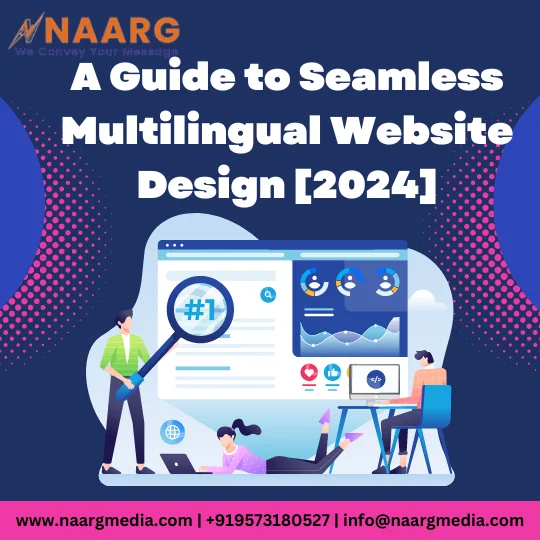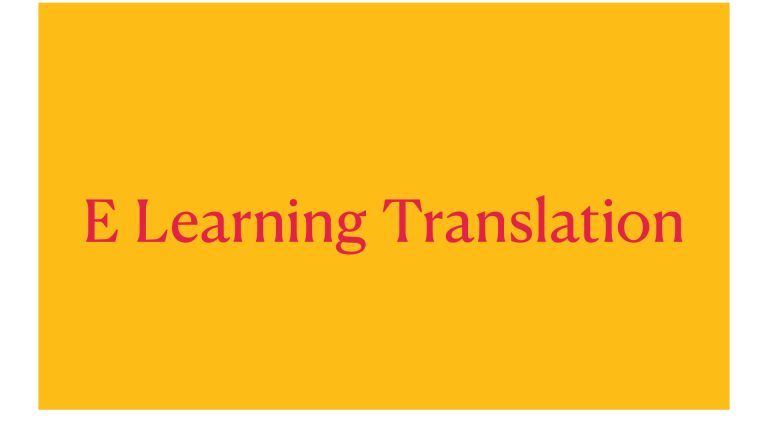Did you know that we have 7164 living languages? And as we all know, the Internet knows no bounds when it comes to language. As many businesses strive to reach a global audience, the importance of multilingual website design cannot be overstated. It doesn’t matter whether you are an e-commerce giant, a small local business, or a multinational corporation; seamless communication with your audience is paramount.
Multilingual website design is all about crafting a website that not only speaks the language of your visitors but also speaks to their preferences, needs, and cultural nuances. It’s about creating a user experience that resonates with your international audience across cultures, languages, and borders.
If you want to learn more about multilingual website design and website development and their importance, then read this blog further. Let’s unlock the potential of multilingual website design together and propel your business towards global success.

The Importance of Multilingual Website Design
An ideal way to attract international customers is by creating a multilingual website. Creating and designing a multilingual website will help you expand your customer base in the international market and build much stronger brand recognition among your potential customers. In addition to this, when your website is in multiple languages, it helps reduce the bounce rate because your potential customers are more likely to stay on the site longer than they would.
As they will be more comfortable with their native language. Website designs facilitate engagement and effective communication with your customers, transcending linguistic barriers and helping you reach global markets. By providing content in multiple languages, you can enhance the user experience, foster inclusivity, and ultimately boost customer satisfaction and loyalty.
Moreover, having a multilingual website enhances search engine visibility, improving your chances of being discovered by your target audience searching in different languages. Embracing multilingual website design is not just about catering to multiple language preferences; it is about expanding horizons, embracing diversity, and maximizing the potential of your digital landscape.
Benefits of Multilingual Website Design
A multilingual website offers several benefits that can enhance your user experience, expand your audience reach, and improve your overall website performance. We have listed some key benefits of having a multilingual website design.
1. Global Reach
Offering content in multiple languages can help you reach a broader audience across different regions and cultures. This expands your potential customer base and leads to increased traffic and engagement for your website.
2. Improved User Experience
Nowadays, users prefer accessing content in their native language, as it enhances comfort and comprehension. Having a multilingual website allows visitors to understand, navigate, and interact with your content more easily, resulting in a better user experience.
3. Increased Conversations and Engagement
Content in multiple languages increases the chances of your users engaging with your website and taking the desired actions, like making purchases, filling out contact forms, or subscribing to newsletters. Ultimately, this leads to higher conversion rates.
4. Competitive Advantage
There are many industries where having a multilingual website can give you a competitive advantage. You can look at the example of Amazon. If you look at the language preferences on their website, you will see that there are multiple languages listed from which you can choose. Making it stand out from its competitors. Having a multilingual website positions your brand as more inclusive, accessible, and potentially attractive.
5. Flexibility for International Expansion
If you are planning for international expansion or targeting diverse markets, then having a multilingual website provides a solid foundation. It will enable you to scale your online presence more effectively and adapt to the linguistic needs of your new target market as you grow.
Investing in multilingual website design offers numerous advantages, and most importantly, it is a strategic approach for your business if you are looking to connect with global audiences and maximize your online presence effectively.
Key Considerations Before Multilingual Website Design and Implementation
There are several key considerations that you need to look into before diving into multilingual website design implementation. It is crucial to address these key considerations to ensure its success. Listed below are some key considerations that you need to follow before implementing multilingual website design.
1. Business Objectives
It is essential to understand the overarching goals of your multilingual website. Always determine whether you aim to expand your global reach, increase sales in specific regions, or enhance user engagement. Having clear business objectives will guide your decision-making throughout the design and implementation process.
2. Target Languages and Markets
Always identify the languages and regions you want to target. Conduct thorough market research to understand linguistic nuances, cultural preferences, and user behaviors in each of your target markets. You need to prioritize languages based on their relevance to your target audience and their potential for business growth.
3. Design and User Experience
When creating a multilingual website in multiple languages, always design language-specific layouts and user interfaces that cater to the preferences of each target audience. Always consider cultural differences in color schemes, design aesthetics, and imagery. Because what might be acceptable in one culture may not be appropriate in another culture. So you need to ensure that every cultural preference is met according to the target market and audience. Also, it is essential to ensure that website elements, like forms and buttons, are localized and adapted for each of the target languages to enhance accessibility and usability.
4. Testing and Optimization
No website will be ready to roll out without prior testing and optimization. So, it is essential to conduct thorough testing of each language version of your website to identify and address any issues or inconsistencies. And make sure to test website functionality, usability, and performance across different devices and browsers. It is also essential to gather feedback from native speakers and the target audience to optimize the user experience and address any localization challenges.
Careful consideration of these key factors before implementing a multilingual website design can create a seamless and engaging experience for your users across different languages and regions. Driving your business to exponential growth and global expansion.
Need a hand in localizing your website? Get in touch with us today for the best website localization services.
Contact us today to know more about our services.




